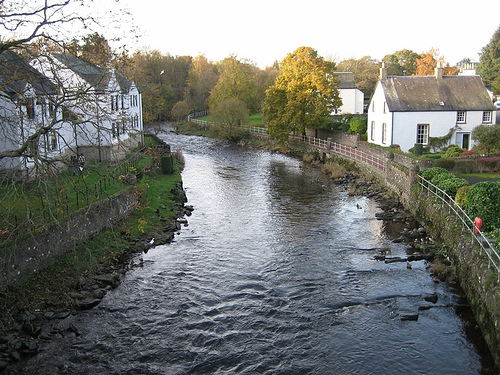Dunblane
Located only five miles or so from the beautiful city of Stirling, the town of Dunblane is both pretty and interesting. The town centre is a hive of activity and the town also boasts its very own cathedral which really should be explored. Though this is a busy town, it has managed to retain much of its original character and charm, this could be due to the fact that there is not a great deal of traffic through the town than has required it to be over developed, thanks to the two major bypasses that take the through traffic along alternative routes to the major centres at Stirling, Glasgow and Perth. Dunblane makes a great place to stay when you want to tour this part of Scotland as both the roads and the good rail links mean that the rest of the country is easily accessible.

Town History
The town is along the route of an old Roman road that once took travellers all the way to Perth, and it is believed that there was at one time a Roman fort built on the higher ground (known as a ‘dun’ in Gaelic), on the site where the cathedral now stands. The cathedral is believed to have been built upon a site chosen by St Blane in approximately 600AD for what was originally a monastery. But this certainly goes some way to explain how the town received its name. Before the cathedral was built, the site was home to a stone church believed to have been erected in 1150, though this was not the only church in the town as later investigations discovered. During renovation work undertaken in the 1960’s a row of cottages on the eastern side of the church were converted into an ecumenical centre and retreat facility, during the work a small chapel of vaulted stone was discovered in the ground behind them. This chapel has since been fully restored and is believed to date back as far as the 1200’s, it is now used as the church for the ecumenical centre and retreat.
World Famous
The town library is famous throughout the world. Upon the death of Bishop Robert Leighton in the 1600’s a vast fourteen hundred books were bequeathed to the town, plus the funds required to build a library in which to house them. The library building was restored at the end of the twentieth century and still houses the bequeathed volumes. As with many other Scottish towns the rivers brought the textile industry here, and Dunblane became known for its silk dyeing trade. It was when the railway came to Dunblane that the town really started to grow, people started to visit the region in large numbers. The water of the rivers still plays a major part in the life of the town though with power supplied from hydro electricity and the fabulously situated Dunblane Hydropathic Hotel sitting in its vantage spot, looking across the town from the hills. The hotel originally opened in 1878 and still attracts many visitors.


